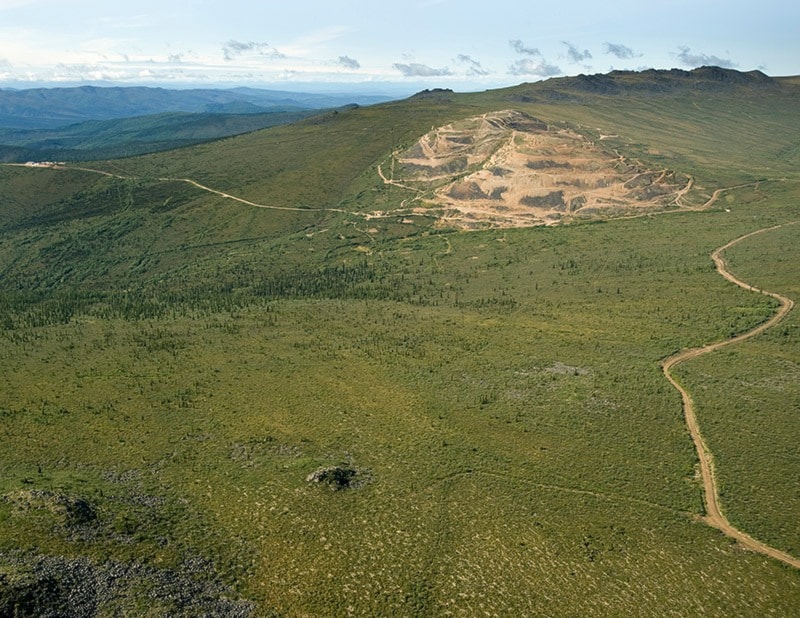The president of the Casino Mining Corporation says the company’s redesigned tailings pond for its proposed copper and gold mine will use 80 per cent less water than the original plan.
Paul West-Sells discussed the company’s new design at the Yukon Geoscience Forum & Trade Show on Monday.
“We’ve gone from having a tailings pond to really having a tailings puddle,” he told audience members.
The redesigned pond would also keep the more dangerous tailings — those that are potentially acid-generating — at the very back of the tailings pond, where they would be least likely to flow into the environment if the dam were ever breached.
According to the original plan, all of the tailings and waste rock would have been covered with water. West-Sells explained that the company originally assumed the dam could never break, so it made sense to use lots of water to cover all the material.
But then the Mount Polley tailings dam breached in B.C. in 2014, releasing 24 million cubic metres of mine waste and water into surrounding waterways.
“In a pre-Mount Polley world, your dam doesn’t fail, so why are you worried about the volume of water?” he said. “In a post-Mount Polley world, you look at that and say ‘How much do I need?’ And that’s where we ended up with that reduction.”
According to the new design, all of the non-acid-generating tailings — about 80 per cent of the total — will be deposited right behind the dam, and won’t be covered with water. The sandy tailings will form a “beach” that extends a kilometre back from the crest of the dam.
Waste rock will be piled behind those tailings, and will be submerged in water after the mine closes. Casino Mining’s senior environmental manager, Mary Mioska, said the water is necessary because the waste rock can release acid and metals if it’s left exposed to the air.
The remaining 20 per cent of the tailings, which would be potentially acid-generating, will be stored behind the waste rock in water, forming a kind of slurry.
“Were there to be a failure, the possibility of that mobilizing is very, very slim,” Mioska said, explaining that the dangerous tailings would have to travel about five kilometres just to reach the front of the dam.
The total volume of water is now estimated at about three million cubic metres, down from 15 million cubic metres in the original design. If the dam did break, water likely wouldn’t come shooting out into the environment, Mioska said.
“Instead of having this wave of material, you’ll have this slump.”
However, the design changes likely won’t have a major impact on the height of the dam, which at 286 metres would be the tallest tailings dam in the world.
Mioska said that’s because the height is largely determined by the volume of waste material, which hasn’t changed.
Still, some of West-Sells’ audience members on Monday seemed unconvinced. He fielded a number of questions about the safety of the tailings pond over the long term.
“These developments are here generally for thousands of years,” one woman said. “I don’t expect you to be here for thousands of years, but is your corporation… working on developing technologies that gives some sort of hope to First Nations that this stuff can be remediated and gone and we can get back to a healthy environment for our future generations?”
West-Sells replied that the company is committed to using the best available technology.
The proposed Casino mine could produce an estimated 8.9 million ounces of gold and 4.5 billion pounds of copper over a 22-year mine life.
Casino Mining submitted a proposal to the Yukon Environmental and Socio-economic Assessment Board in January 2014. But in February 2016, the board bumped the project up to a panel review, the territory’s highest level of assessment, in part because of concerns about the tailings pond.
The mining company plans to complete a new submission to YESAB by the end of 2017, meaning a panel could be struck in 2018. The panel review process includes public hearings.
Contact Maura Forrest at maura.forrest@yukon-news.com
